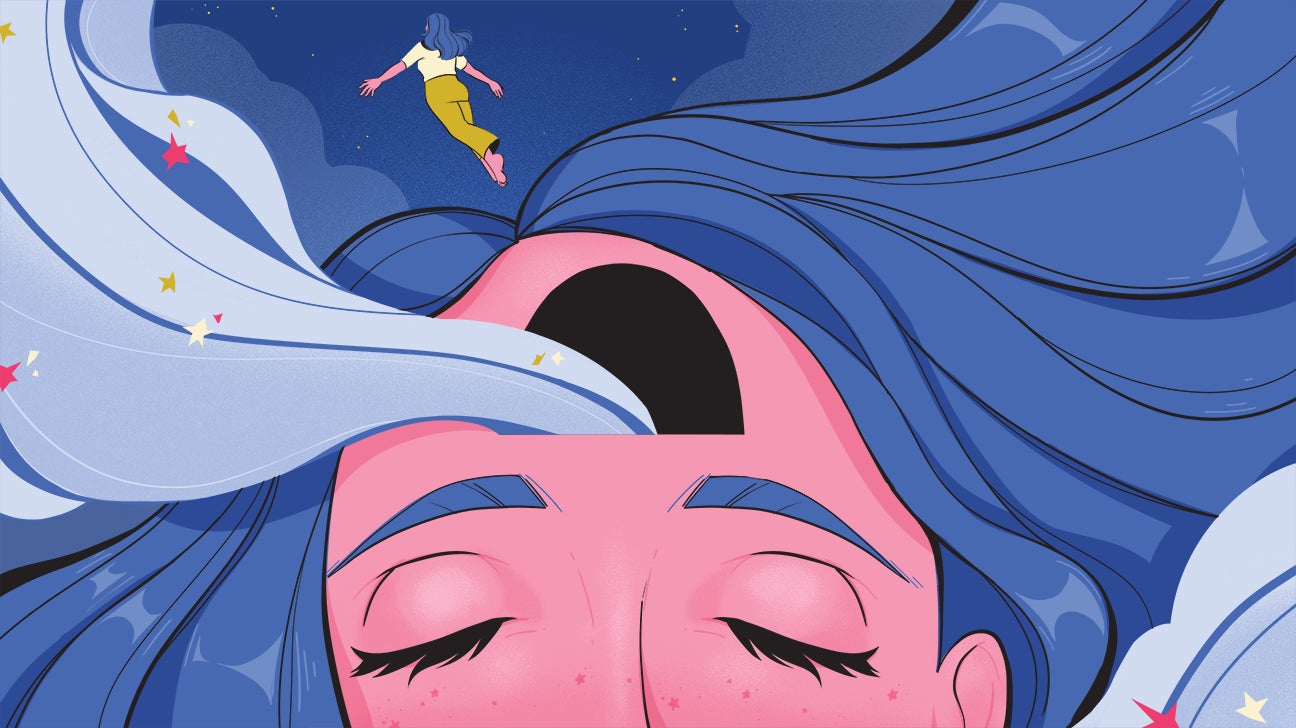Lucid Dreaming: Sleep Paralysis' Opposite
You can actually control your dreams...
Lucid dreaming is a phenomena in which the dreamer recognizes that they are dreaming, and is able to manipulate their actions and the dream's characteristics itself. Through practice and lots of mental power, the dreamer is able to do anything they want in this state, and most reports have concluded that lucid dreaming is very positive. Dreamers are able to fly, talk to their crush, and go on any adventure their minds can think of!

Connecting to the past...
Lucid dreaming, like most dream states, is nothing new to our world. In fact, the lucid state has been a practice around for centuries, used by Buddhists to enhance their daily living. It was also described by Aristotle in his novel On Dreams, and the term itself was coined by Dutch psychiatrist Frederik van Eeden in the early 20th century. Basically, lucid dreaming has been touched upon in every era from ancient times to medieval, and now.
Science!
This is not a bunch of hoopla, I see you doubting!
Lucid dreaming was recognized in the world of science in 1975 when researchers recognized the concept of Rapid Eye Movement, aka REM sleep. REM sleep is known as deep sleep and is characterized by increased eye movement under our eyelids, low muscle tone, quicker pulse, and a time for vivid dreams.
This dream state has two triggers: either the ability to recognize your dream surroundings is a spontaneous ability OR you are closer to wakefulness than sleep. In the latter, you may have woken up for a split second and then fallen back asleep quickly.
There are many benefits to lucid dreaming, as this natural state is a very positive one unlike sleep paralysis- which we'll compare in a bit. Benefits include decreased anxiety, increased motor skills, creativity boosts, and more. According to brain scans taken by a group of German researchers, those who take time for self reflection are able to reach larger depths of lucidity, therefore gaining more control within their dreams.
Lucid dreaming vs Sleep paralysis
Sleep paralysis is a disruption during REM sleep in which your body is paralyzed but your mind is awake. This happens because in deep sleep, the muscles are extremely relaxed to prevent the dreamer from acting out their dream, so when your mind wakes up- you find yourself paralyzed and it's hard to breathe. Not too bad, right? Well, hallucinations (visual and sometimes auditory) may accompany the dream state. Almost every hallucination is terrifying enough to evoke fear in someone, so much fear that it gets harder to fall asleep at night. Such hallucinations involve "sleep demons" in which shadows watch you sleep, old hags sit on your chest, and more descriptions on my guide to sleep demons.
Sleep paralysis can be caused by a number of factors, all of which are associated with poor health. Inconsistent sleep schedules, sleep deprivation, and poor mental health all contribute to sleep paralysis.
Lucid dreaming is when the dreamer is aware that they are dreaming and is associated with a more positive lifestyle including meditation, self reflection, and more.
Both are dissociative dream states that take place during REM sleep.
WARNING
Lucid dreaming is something you must practice to achieve, it takes a lot of brain power. If you feel mentally drained, take a break.
If you do manage to lucid dream, do not begin to confuse dreaming for reality and vice versa. If you begin to feel confused, take a break.
Sometimes, when you're trying to lucid dream, you may accidentally fall into sleep paralysis. If this happens, remain calm - and check out my post on my sleep paralysis survival kit.
Stay tuned!
A guide on how to lucid dream will be up and ready for you very soon! For now, keep healthy and share your thoughts down below.
Comments